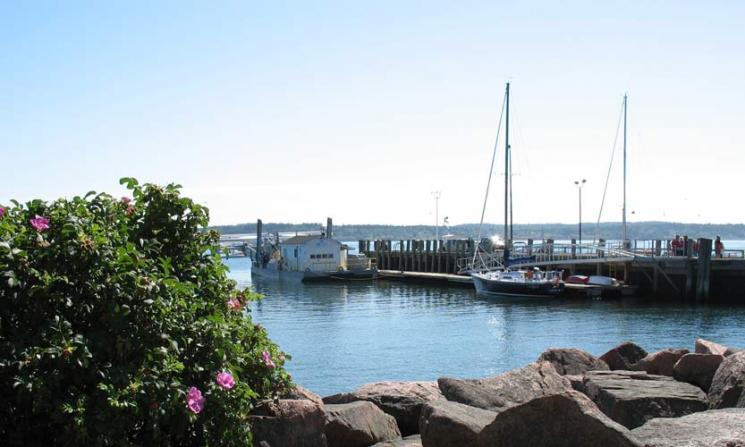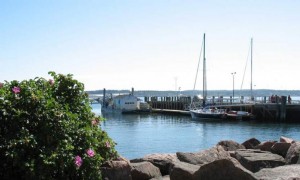
Tidal Energy Comes to the US

Cobscook Bay, Maine, is the site of a tidal energy pilot project led by Ocean Renewable Power Company.
A big part of the future of US renewable energy may have been launched in the eastern-most city in the United States this week. The nation’s first commercial tidal energy project was dedicated on Tuesday in Eastport, Maine, opening the potential for an energy project which could generate approximately 3 megawatts of electricity for the United States over the next few years. It is hoped that this device will generate 250 terawatt hours annually. The launch of this project could be a huge step towards the future of renewable energy. The first tidal generator, which will be lowered to the seafloor in Cobscook Bay and hooked up with a network of 20 underwater turbines, can produce enough electricity to power approximately 1,200 homes. When it is hooked up to the power grid in September, it will start slowly by powering just 25 homes.
This breakthrough in US Renewable Energy is the culmination of several years of hard work and investments by the Department of Energy and the Ocean Renewable Power’s backers. The Department of Energy invested $10 million in the project in its early stages, allowing it to be developed for the commercial stage. The systems that have been created by the Ocean Renewable Power Company (ORPC) of Portland, Maine, capture the energy of moving water that rotates a turbine to power a generator. The tides in Maine are extremely strong, making it an ideal location to harness energy. The tides rise and fall at least 20 feet over a 12-hour period. The only other place in the US where the tides are stronger is in Alaska.
Harnessing tidal power for energy is not new to Maine, and is not new to the United States. What is new is that it is being hooked up to the electrical grid. In the 18th century, small tide mills in Maine used underwater wheels to power small machinery. President Franklin Delano Roosevelt created a plan in the 1930s that would dam the Cobscook and Passamaquoddy Bays for electricity generation but the plan was abandoned because it was cut by Congress as too expensive.
This recent advancement in tidal energy has also created jobs in Maine and in Eastport, specifically, where the unemployment rate is 12% for a city of only 1,450. The unemployment rate in Maine overall is at 7.5%. ORPC has created at least 100 jobs since 2007 and has invested $14 million in Maine, and close to $4 million in Eastport alone. US Energy Secretary Steven Chu spoke of the economic and energy importance of this advancement:
“Developing America’s vast renewable energy resources is an important part of President Obama’s all-of-the-above energy strategy to create jobs and strengthen U.S. global competitiveness…The Eastport tidal energy project represents a critical investment to ensure America leads in this fast-growing global industry, helping to create new manufacturing, construction, and operation jobs across the country while diversifying our energy p
ortfolio and reducing pollution.”
Tidal energy is not new to the world, with Canada (in Nova Scotia), China, France, the UK, Russia and South Korea all using it currently for energy production and others like India and the Philippines working on creating tidal stations. This tidal energy project continues to keep us at the table as one of the leaders in sustainable energy.






[…] Tidal Energy Comes to the US […]
[…] A big part of the future of US renewable energy may have been launched in the eastern-most city in the United States this week. The nation’s first commercial tidal energy project was dedicated on Tuesday in Eastport, Maine, opening the potential for an energy project which could generate approximately 3 megawatts of electricity for the United States over the next few years. It is hoped that this device will generate 250 terawatt hours annually. The launch of this project could be a huge step towards the future of renewable energy. The first tidal generator, which will be lowered to the seafloor in Cobscook Bay and hooked up with a network of 20 underwater turbines, can produce enough electricity to power approximately 1,200 homes. When it is hooked up to the power grid in September, it will start slowly by powering just 25 homes. This breakthrough in US Renewable Energy is the culmination of several years of hard work and investments by the Department of Energy and the Ocean Renewable Power’s backers. The Department of Energy invested $10 million in the project in its early stages, allowing it to be developed for the commercial stage. The systems that have been created by the Ocean Renewable Power Company (ORPC) of Portland, Maine, capture the energy of moving water that rotates a turbine to power a generator. The tides in Maine are extremely strong, making it an ideal location to harness energy. The tides rise and fall at least 20 feet over a 12-hour period. The only other place in the US where the tides are stronger is in Alaska. Click headline to read more– […]
… [Trackback]…
[…] There you will find 55631 more Infos: americansecurityproject.org/blog/2012/tidal-energy-comes-to-the-us/ […]…
[…] Tidal Energy Comes to the US […]